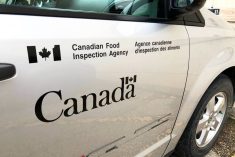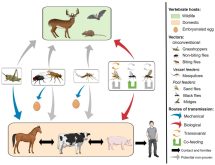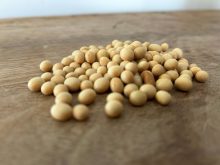U.S. animal health officials have closed the books for now on avian influenza infections in 10 states, with five others remaining.
In its latest report to the World Organization for Animal Health (OIE) last week, the U.S. federal Animal and Plant Health Inspection Service (APHIS) said all control areas for avian flu have been released in Arkansas, California, Idaho, Indiana, Kansas, Missouri, Montana, North Dakota, Oregon, and Washington.
Depopulation, cleaning and disinfection have been completed, as has required surveillance in the 10 states and their avian flu control areas, with negative results for the virus, APHIS deputy administrator John Clifford wrote in the report.
Read Also

U.S. livestock: CME cattle tick lower in thin pre-holiday trade
Chicago | Reuters – Chicago Mercantile Exchange live and feeder cattle futures were little changed but ended slightly lower on…
No avian flu detections through wild bird surveillance have since been made in those states, he added.
“Now that we are releasing the quarantines on the affected properties, these producers can now restock their barns and resume business,” Wisconsin state veterinarian Dr. Paul McGraw said in a separate release last week.
McGraw, however, warned of a “strong likelihood” the avian flu virus could return in the fall when temperatures drop and wild birds begin to migrate.
“Wild birds may not show signs of illness, but they still carry the virus,” he said. “With all the wild birds heading south in the fall, that expands our risk of finding it again.”
The five other affected U.S. states where control zones haven’t yet been released from controls “are making good progress” toward removal, APHIS said.
Control areas in Indiana, South Dakota, Nebraska, Minnesota and Iowa “are being removed as they meet the time elements and other measures for release,” APHIS said in its July 31 report.
North of the border, avian flu control zones and quarantines in southwestern Ontario, where three farms were infected in April, were lifted late last month. British Columbia, which saw outbreaks in the Fraser Valley between December and February, was declared avian flu-free in June.
For the purposes of poultry exports, OIE standards require a three-month enhanced surveillance period after all infected properties in a jurisdiction are cleaned and disinfected, before those jurisdictions can be considered free of avian flu.
The Canadian Food Inspection Agency still has restrictions in place that prevent cross-border travellers from bringing raw or uncooked poultry meat, live birds or eggs into Canada from any of the 15 states that have reported avian flu cases since late last year.
CFIA also restricts commercial poultry and egg imports from the specific quarantine areas in affected states. — AGCanada.com Network















